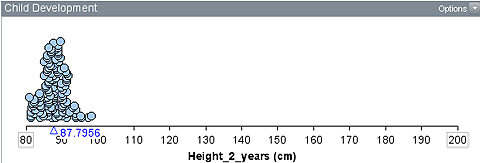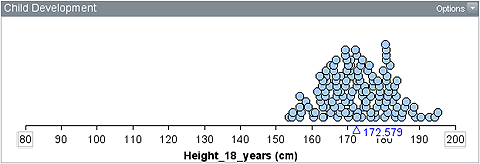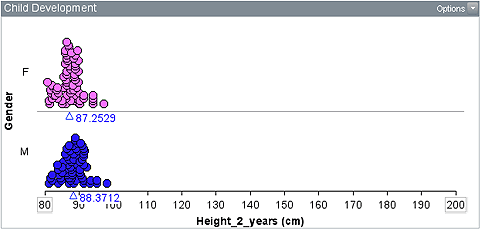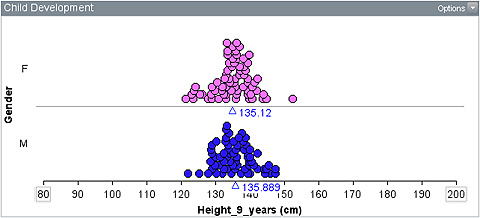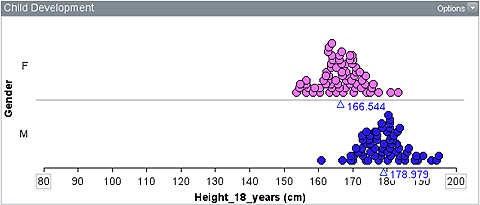Home > Statistics > Misunderstandings > Difficulties with informal inference > Differences in heights
Differences in heights
The first three plots show the heights of 136 children at ages 2, 9 and 18 years.
The next three plots show the heights of the 136 children separated by gender at each age level.
Write a description of the differences observed for the first three plots and for the second three pairs of plots. Include a statement about your confidence in the differences between the populations they represent.
Examples related to rainfall can be found in Is There a Difference? and some teaching advice on meaningful differences and difficulties with informal inference is also provided.

